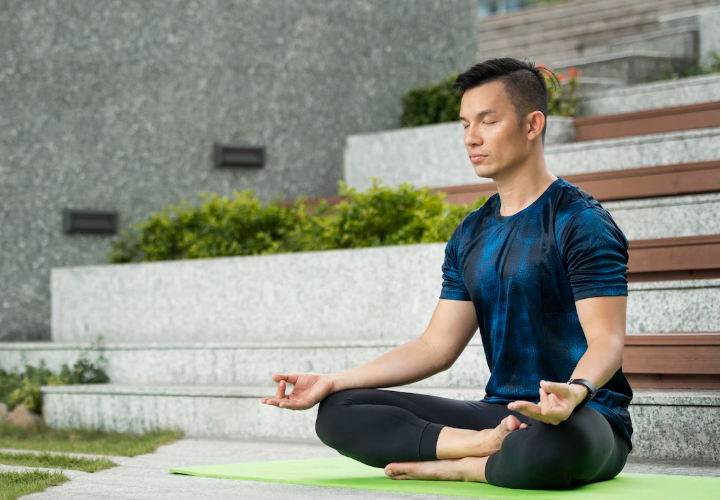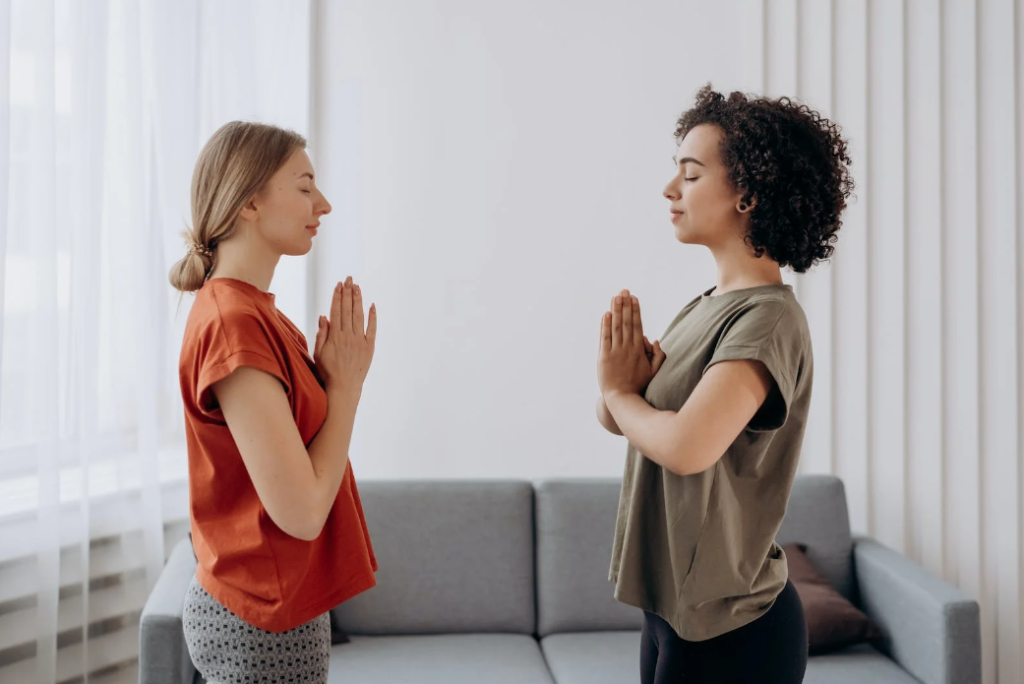Meditation Positions
Learn the proper meditation positioning to strengthen the back and knees.

Selfpause Affirmation App
Download the app to get 1,000’s of affirmation meditations and everything you need to write, record and listen to your own.
Sitting in the lotus position is a common meditation posture. It helps to calm the mind, stretch the legs, and strengthen the upper body. It also increases circulation in the lower body and can soothe menstrual cramps. Although this is an advanced meditation technique, beginners can also benefit from this pose.
If you have limited flexibility, you may not be able to hold this position. If this is the case, it may be best to opt for another meditation posture. A common obstacle for beginners is limited hip flexibility. It is important to warm up the hips with the Butterfly Stretch before attempting this posture.
For intermediate meditators, a half-lotus posture is a good option. This posture requires less flexibility than the full lotus, but still strengthens the back and knees.
Sitting in a cross-legged position

Sitting in a cross-legged meditation position is an ancient posture used for meditation in various traditions. In Hinduism, this position is associated with Shiva, the ascetic God who embodies meditation. In Buddhism, the pose is associated with Gautama Buddha and the Tirthankaras. It also symbolizes yoga and well-being.
This position is sometimes difficult for beginners, but with a little practice, you can achieve it. The key is to find a comfortable, supported seat. The cross-legged posture is the foundation for many yoga asanas, pranayama, and meditation techniques. Initially, you should experiment with different cross-legged positions to find the one that feels right for you.
A meditation cushion is essential for support when sitting cross-legged on the floor. If you can afford it, purchase a well-made, firm meditation cushion. This will help keep you from getting sore or uncomfortable while practicing meditation. It is also important to keep your back in mind when sitting in this position.
Easy pose

Sukhasana, a simple cross-legged sitting asana in hatha yoga, is often used for meditation. The pose is also used in Hinduism and Buddhism. It is one of the most relaxing poses for meditation. You can practice sukhasana at home to help you focus on your breathing.
The Easy pose is a great choice for meditation because it opens the hips and lengthens the spine, promoting calm and groundedness. It is a good choice for beginners and intermediate meditators alike. Some people are not comfortable in more challenging meditation postures, especially if they are inactive or start their practice late.
A variation of this pose is the heart-to-hound or lotus pose. A seated dog should be placed in front of the legs. This will lengthen the spine and back muscles and make the torso more flexible. Another option is the Bowing Yoga Mudra Seated, which opens the shoulder blades and stretches the pectoralis muscle. This poses opens the chest and promotes deep breathing, relieving restlessness and tension in the mind.
Our Top FAQ's
There are many different positions that can be used for meditation, including seated positions (such as cross-legged or in a chair), lying down, standing, and walking. Some people even meditate while engaged in activities like yoga or tai chi. The important thing is to find a position that is comfortable and stable, so you can remain alert and focused during your meditation practice.
It is not necessarily necessary to sit in a specific position in order to meditate effectively. The key is to find a position that is comfortable and allows you to maintain good posture, so you can focus on your breath and bring your attention inward. Some people find it helpful to sit in a traditional meditation posture, such as the lotus position, while others prefer to sit in a chair or on a cushion. Ultimately, the right position will depend on your individual needs and preferences.
Yes, it is possible to meditate while lying down. In fact, many people find it easier to relax and let go of tension when they are lying down, and this can be a good position for beginners to try. It is important to make sure you are comfortable and not too warm, and to choose a surface that is firm but not hard, such as a yoga mat or a folded blanket.
For beginners, it can be helpful to start with a seated position that is comfortable and allows you to maintain good posture. This could include sitting in a chair with your feet flat on the ground, or sitting on a cushion with your legs crossed. If you prefer to lie down, you can try resting on your back with a pillow under your head and a blanket over your body.
Yes, meditation can be done while standing or walking as well as while sitting or lying down. This is known as “moving meditation,” and it can be a good way to incorporate mindfulness into your daily activities. Some people find it helpful to focus on their breath or a mantra while walking or standing, or to use a mindful movement practice like tai chi or qigong. It is important to pay attention to your body and surroundings as you move, and to stay present and aware in the moment.
